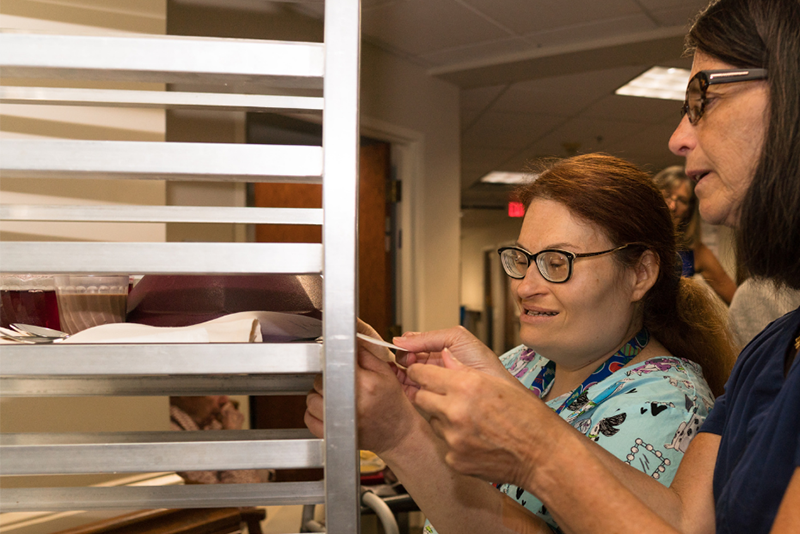Workforce Shortage for People with Intellectual and Developmental Disabilities
The month of October is nationally recognized as Disability Employment Awareness Month. On September 30, 2021, President Biden issued a Proclamation that recognized both the ADA and the Office of Disability Employment Policy in the Department of Labor, which was established 20 years ago. Despite these efforts, Brookings.edu reports that just four in ten working-age adults with one or more disabilities are employed, but that was before the pandemic.
A recent study by the Cornell IRL School found that 43% of Americans with disabilities employed in 2018 worked in industries that were most affected by the COVID crisis including: construction; wholesale and retail trades; arts and entertainment; transportation; and other similar service industries. In many cases, these sectors of the economy are still struggling to fully recovery.
Many individuals with disabilities seek employment benefit from the support of a job coach. This is also known as the waiver service called SEMP. Voluntary agencies report that they are facing a 25% shortage in their workforce. Even if an individual can access competitive employment, they may not be able to find the support they need to do the job.
These statistics leave out a significant portion of the IDD population: those who for many reasons are NOT candidates for competitive employment. Work Centers, often referred to as Sheltered Workshops, will be eliminated in New York State by the end of 2021. While this employment model is widely considered to be problematic, OPWDD currently has no plans to move the thousands of individuals in those programs into alternative employment opportunities.
On a positive note, the COVID-19 pandemic normalized working from home, and that could open doors for many of America’s workers with disabilities. Despite the advances of ADA, which created greater physical access to employment, issues like affordable transportation and functioning elevators still prove to be problematic. As one disabled individual said, “For so many disabled workers, working virtually allows you to be more efficient, you can attend more meetings and your home environment is already tailored to you.”
Like many other states, New York can do better, but not until we identify where there are systemic problems and develop real solutions. This will be the focus of the October 20th Assembly Employment Hearings. To contribute to this discussion, we urge you to contact NYS Assemblymen Tom Abinanti’s office before October 18th.
Click here for more information on how to get involved.

